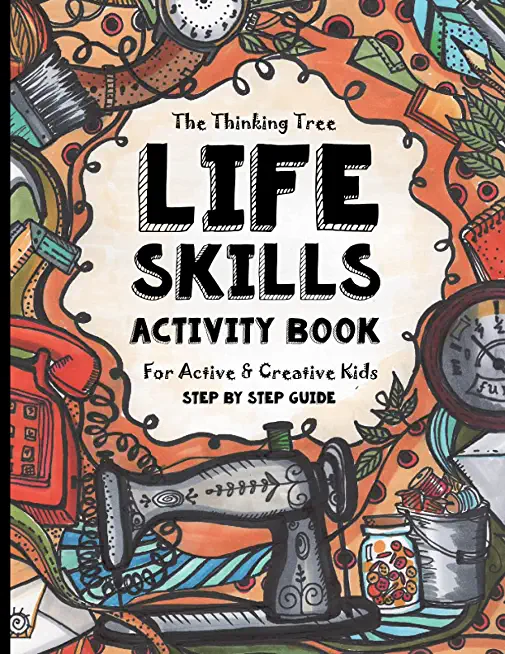
Brown, Sarah Janisse
Life Skills for Kids - a Fun-Schooling activity book to help kids prepare for real life.
Students will use library books and parent-approved websites alongside this journal to learn each of these skills:
- first aid
- laundry
- sewing
- how to converse on the phone
- how to write a thank you note
- make a meal plan
- write a shopping list
- public speaking
- how to be a good friend
- online safety
- make your bed
- start a small business
- food storage
- meeting new people
- cleaning
- ironing
- studying for a test
- apologies
- table manners
- caring for a house plant
- time management
- using a tape measure
- how to read a map
- gift wrapping
- pumping gas in the car
- crochet
- knife safety
- foot massage and reflexology
- pumping gas
- gift wrapping
- tie a tie
- library skills
- reading maps
- making tea
- scheduling an appointment
- taking care of your teeth
There are 36 skills total, so that one skill can be covered each week in a school year.
With a variety of topics to explore and multiple resources to choose from, fun-schooling is delight-directed, independent, and educational all at once.
Additional supplies will be needed to practice these skills and get the most out of the learning experience.
Supply List: - A house plant - Your bed - A smart phone or computer to access applications like Zoom, Google Meet, etc. - A crochet hook and yarn - Sewing supplies - Telephone - Thank you cards, envelopes and stamps - Cleaning supplies - Tea bags, stove or microwave to heat water - Tape measure - Iron and clothing - Dictionary and Thesaurus - Lightbulb - A tie - A vehicle - Map of your city - Knives - Wrapping paper, scissors, tape - Poster board, markers - Gas station.
Does your student struggle with dyslexia, letter reversal, or reading confusion?
This journal was printed with the award-winning Dyslexie font, created by Christian Boer to make reading simpler for dyslexic students.
This journal can be use successfully with students who have Autism, Dyslexia and ADHD. The books is perfect for both boys and girls, and can be used with younger and older children. Younger children will need more help. This skill building activity book can also be used with foster children and adopted children who need to grow in basic skills while bonding with their family.
For a complete homeschool curriculum, discover our Fun-schooling journals on math, science, spelling, and more at www.funschoolingbooks.com.
This book is offered in PDF form on the Fun-Schooling website.
Secular - No religious content - Appropriate for Charter Schools, Public Funding, State Homeschool Reimbursement and Vouchers.
Thinking Tree Learning Levels:
A1 = Pre Reader (Pre-K) ages 2-5
A2 = Beginning Readers (K-1st) ages 6-7
B1 = Early Elementary (2nd-3rd) ages 8-9
B2 = Upper Elementary (4th-6th) ages 10-11
C1 = Junior High (7th-8th) ages 12-14
C2 = High school + (9th-adult) ages 13+
Many Thinking Tree Journals span a wide variety of ages because the students use books at his/her reading level. For example, some journals may say for ages 7-17 because you customize it and meet the student where he's at.
member goods

Multi Metal Table
These are unique pieces by the artist. They can be modified in size and tailored to specific ...
$235.00
Steel Tree Sculpture
These are unique pieces by the artist. They can be modified in size and tailored to specific ...
$110.00
Abstract Steel Sculpture
These are unique pieces by the artist. They can be modified in size and tailored to specific ...
$225.00
Metal Abstract Sculpture
These are unique pieces by the artist. They can be modified in size and tailored to specific ...
$150.00






